There are several different options and configurations to select from, but it is important the design you choose aligns with your long-term goals and management strategies.
History has taught us a lot about barn design and robot configurations, and with more than 35,000 of our robots in operation on dairies worldwide, these are the key factors we have discovered:
- “Lean” principles and methods should be at the heart of your design (eliminating waste and adding value to every step of the process).
- Ample space in front of the robots (at least 20 feet from the nearest obstruction)
- Design the barn with the timid cow in mind. (Bossy cows will always get what they want or go where they want to go.)
- Think about how you plan to carry out the cow touches throughout a cow’s lactation (breeding, pregnancy check, treating, vaccination, dry-off, etc.). Will this be done in a sort pen near the robots, or will this be done within an existing pen?
- Consider ventilation, manure removal, bedding applications and how the barn will handle the weather extremes in your region (winter and summer).
In this discussion, my goal is to help convey what is possible within a certain design and to detail the opportunities within that design which can align with the goals of the operation. On the following pages, there are four different robot configurations for a pen of three robots*, or approximately 180 cows. Each of these designs are actively milking cows with great success all over the world.
*A three-robot pen was used as an example for this article, but these principles also apply for barns with two or more robots.
Long - L
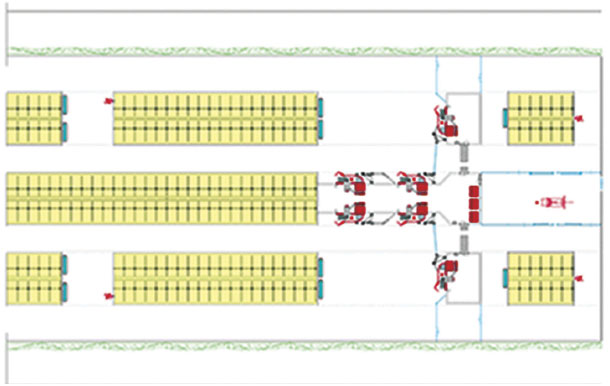
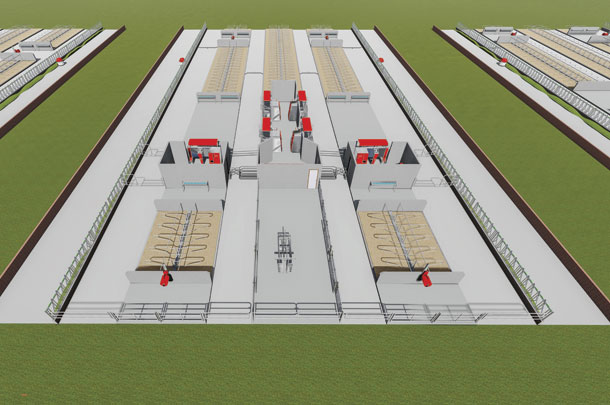
Pros
- Allows cows from the management area easy access to a robot to be milked and then return back to the management area
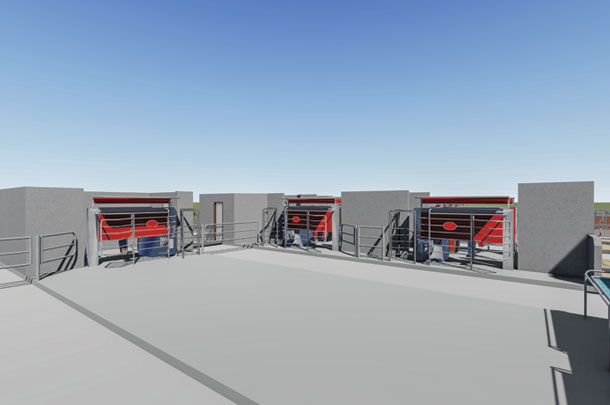
- Sorting from all three robots is ideal. Each robot can sort to the management area.
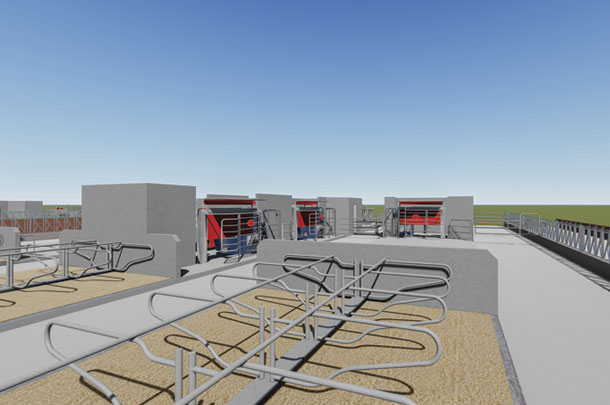
- Manure scraping past the robots is ideal.
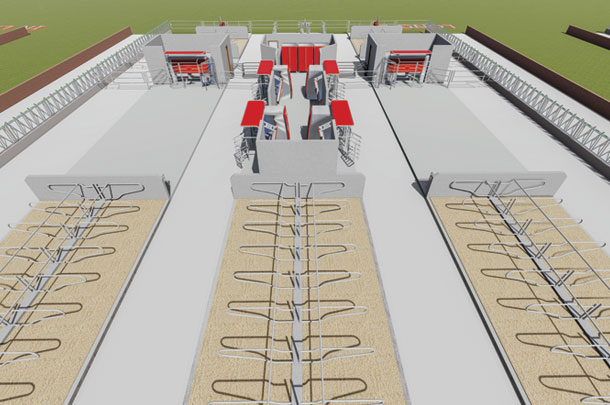
- The same robot arm configuration, such as all lefts, throughout the pen is possible, and the design could also allow two robots with the same arm configuration and one with a different arm, such as two left-hand robots and one right-hand.
Cons
- Multiple robot rooms required within the same pen (higher construction costs)
- Clean access to all robot rooms isn’t always possible (retro versus new build).
- Servicing and cleaning the robots isn’t ideal due to multiple robot rooms.
In - Line
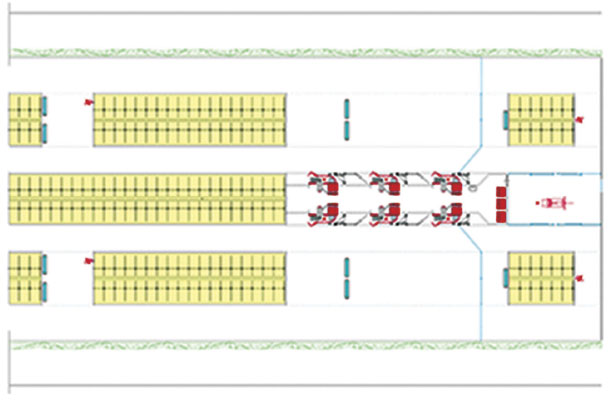
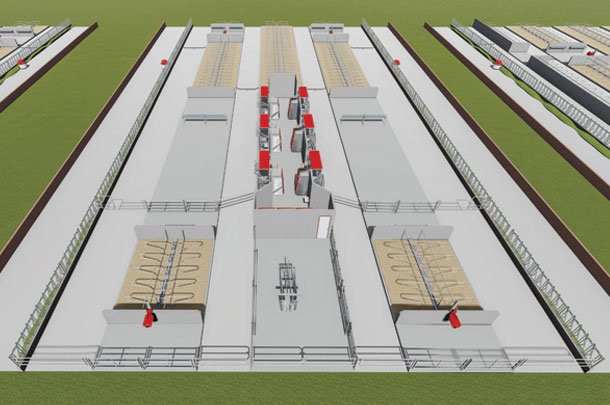
Pros
- All robots in the same robot room (lowest construction cost)
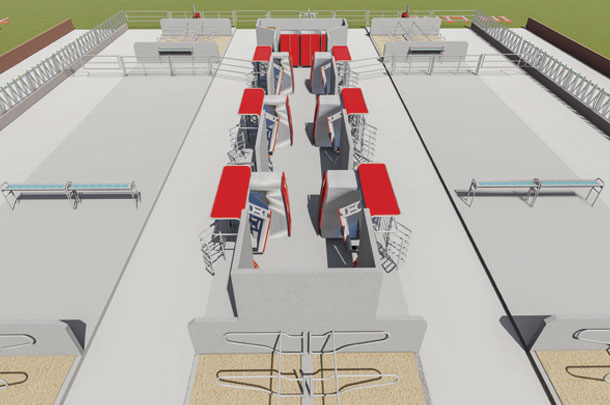
- Ideal for cleaning and servicing when all robots are in the same room
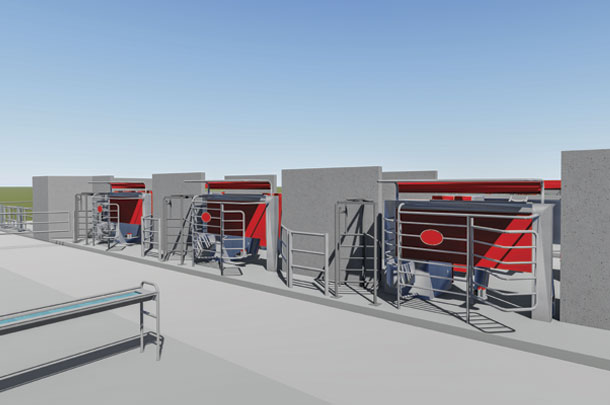
- Manure scraping past the robots is ideal.
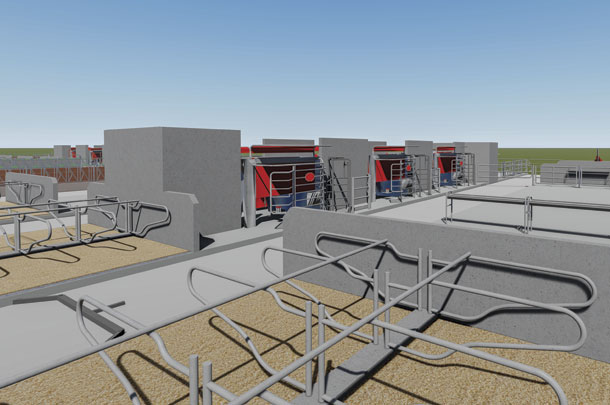
- The same robot arm configuration throughout the pen (all left-handed or all right-handed robots)
Cons
- Cows within the management area are not provided easy access back to a robot. (Gating can be built to accommodate this.)
- Sorting cows to the management area comes with increased risk.
Toll Booth
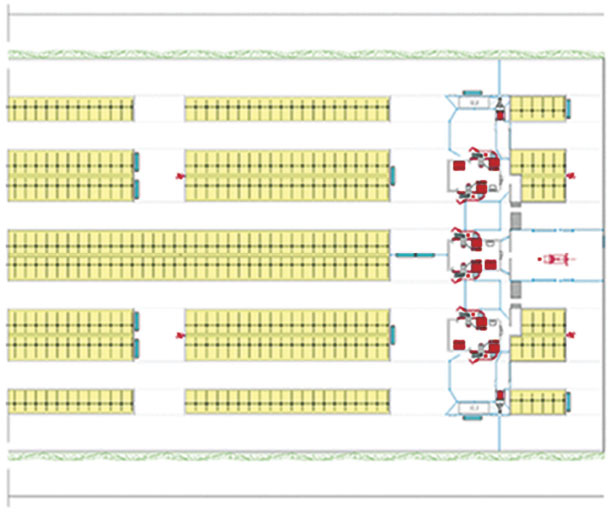
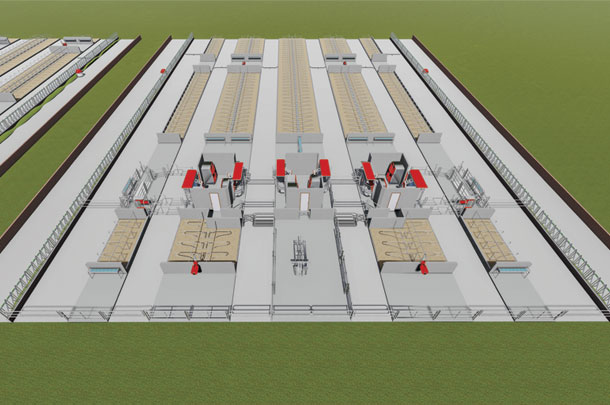
Pros
- After milking or being refused, all cows exit the robots through a common lane and away from the robots, straight to the feed lane.
- The single return lane allows easy foot bathing and sorting options.
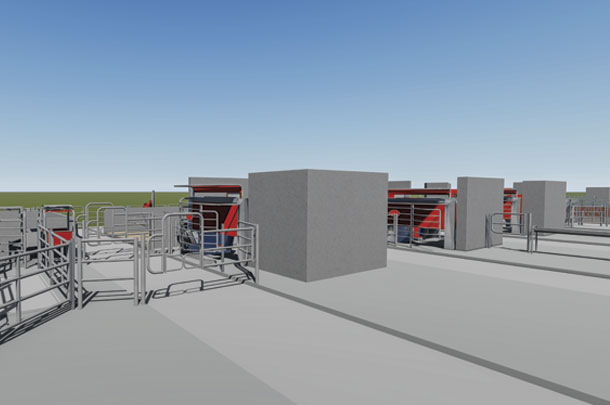
- There is very little congestion in the open area in front of the robots. (Only cows that are due to be milked reside there, as cows that have been milked or refused are sent to the feed lane.)
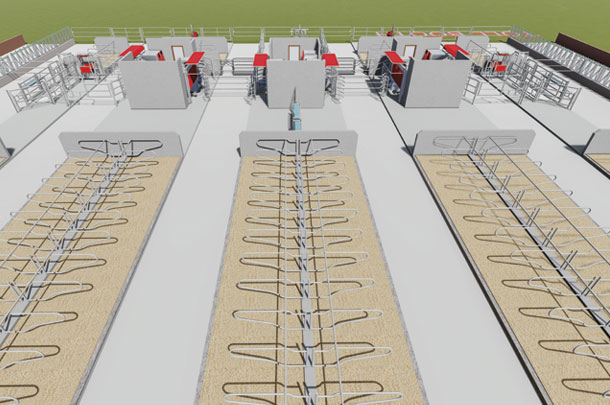
- Allows access to cows in the management area to get back to a robot to be milked
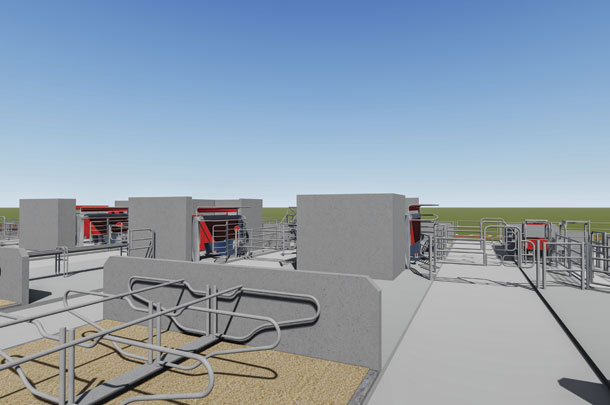
- Manure scraping past the robots is ideal.
Cons
- Multiple robot rooms required within the same pen (higher construction cost)
- Sorting occurs with a sort gate after the robots versus using the robot to sort cows to the management area (additional equipment is needed).
- Clean access to all robot rooms isn’t always possible (retro versus new build).
- Servicing and cleaning the robots isn’t ideal due to multiple robot rooms.
- Ensuring proper flow through the common exit lane is critical. (Bossy cows could block the lane.)
Head - To - Head
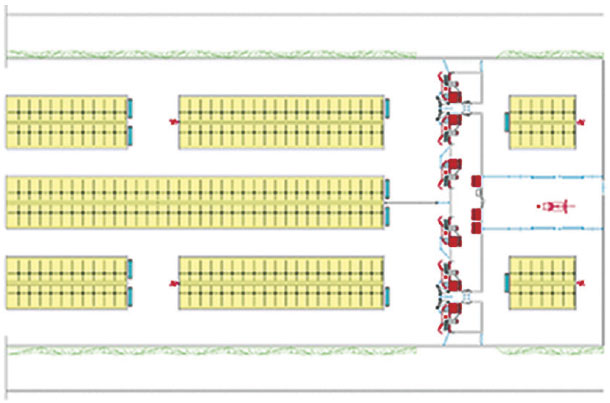
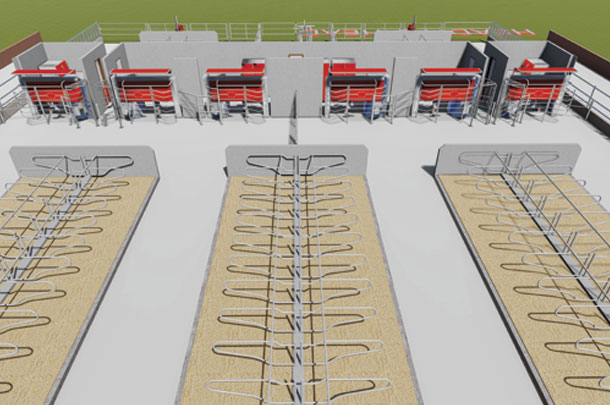
Pros
- All robots are visible and in clear sight throughout the entire pen.
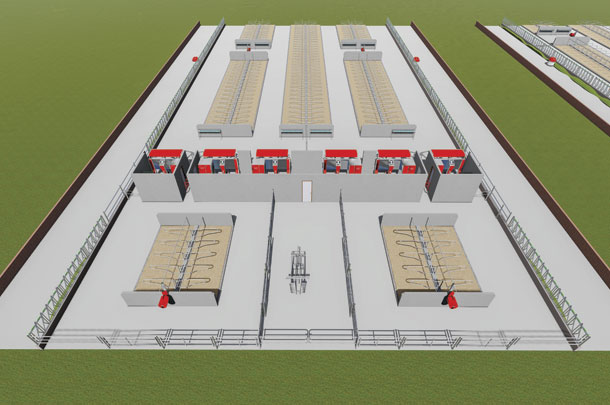
- Allows cows from the management area easy access to a robot to be milked and then returned
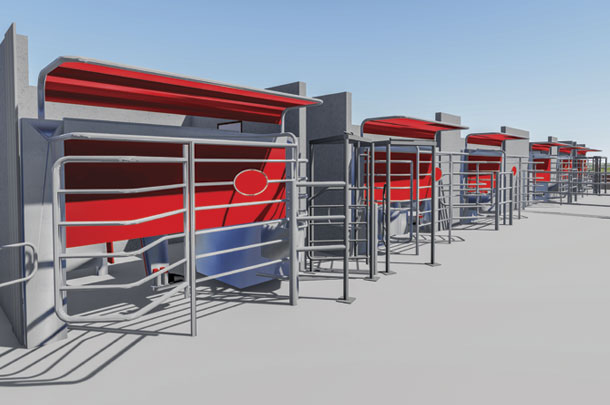
- Sorting from all three robots is ideal. All robots can sort to the management area.
Cons
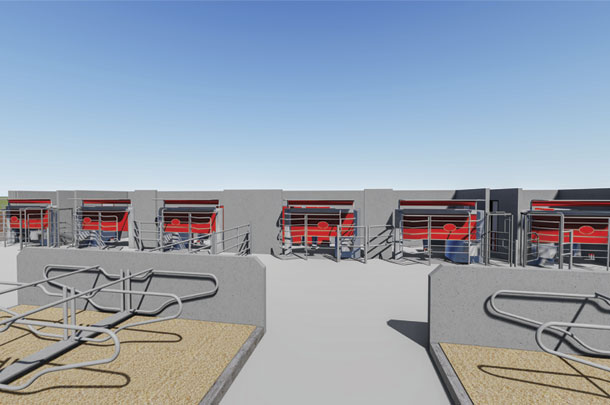
- Manure scraping around the robots is challenging. (Flush barns or robotic scraping units would be advised to clean this area.)
- Multiple robot rooms are required within the same pen.
- Clean access to all robot rooms isn’t always possible (retro versus new build).
- Different robot arms within the same pen (left and right-handed robot arms)
Take a digital tour of the robot configurations in the video below.
By having multiple options and configurations in the design of a robot pen, the producer is able to allow creativity to be matched with future robotic milking goals and management strategies. Each design offers opportunities, and it is vital to choose the design that fits within the goals and management strategies of the operation.
When selecting the option that best fits, lean toward the design that best suits the cows as they will use the robots 24 hours a day, whereas dairy producers and employees will likely interact with the robots for an hour a day. Dairy operators should control the design and lead the discussion.
Do as much research, planning, networking and touring as possible prior to deciding. Once a design is chosen, be ready for the venture into robotic milking to be a rewarding success. Each of these designs can reward cows and employees, and will ultimately lead to big rewards for the producer and the operation. ![]()

-
Preston Vincent
- Dairy XL Dev. Manager
- Lely North America
- Email Preston Vincent






